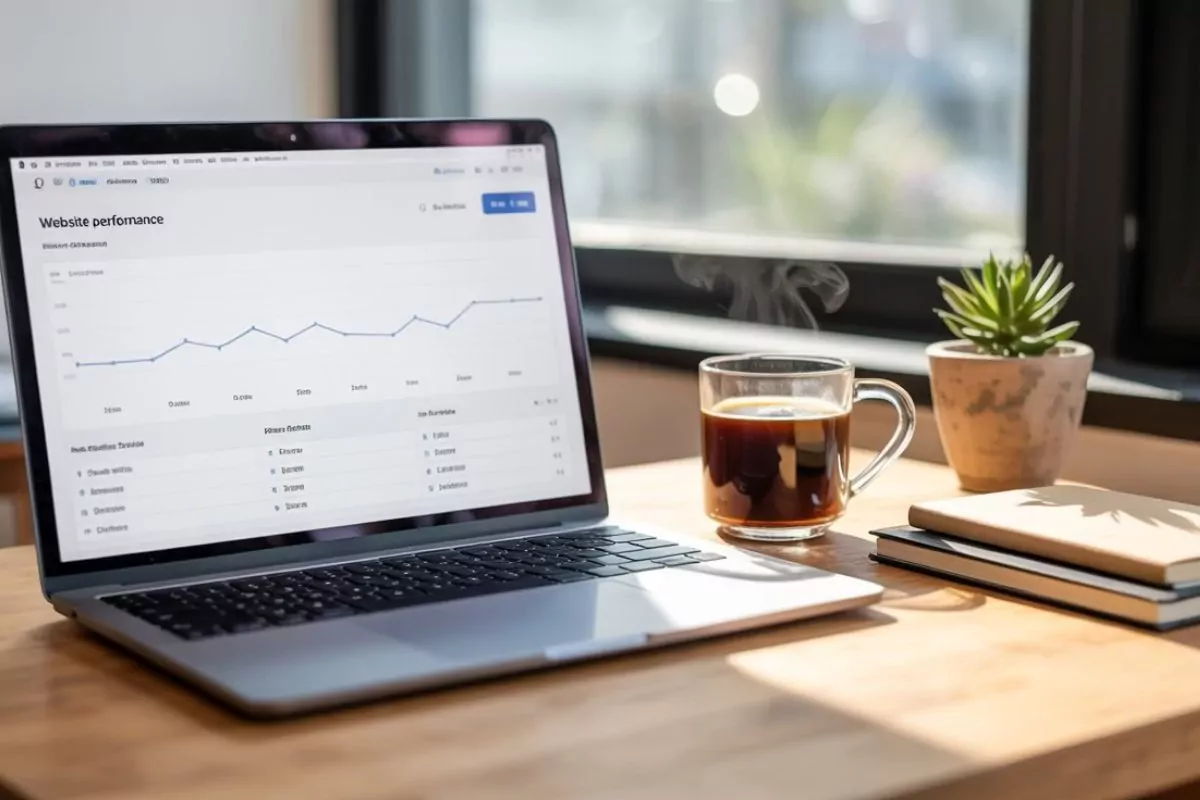Website Stats You Actually Need to Watch

If your website is just sitting out there, hoping people show up like it’s Field of Dreams, I’ve got news for you: they won’t. Not unless you’re tracking what’s working, fixing what’s broken, and doubling down on what’s converting.
Whether you're running a blog, pushing product, or hawking services, web analytics is your secret weapon.
Let’s talk about the stats that actually matter—not the vanity metrics that make you feel good but do nothing for your bottom line.
Traffic Sources: Where Are They Coming From and Why Should You Care?
You need to know how people are finding you. It's the first breadcrumb in the trail of digital behavior, and if you don’t track this, you’re making business decisions with a blindfold on.
Here’s the breakdown:
Organic Search: These visitors typed a question into Google and your site popped up. Congrats. You’ve won the SEO lottery—for now. This channel is free (kind of), but it’s earned. If your organic traffic is rising, your content and SEO game are solid.
Direct: Someone typed your URL into their browser. This is either your mom, a stalker, or someone who remembers your brand. This stat tells you how sticky your brand awareness is.
Referral: These hits come from links on other websites. Think blogs, online magazines, or someone griping about you on a forum. A good backlink profile boosts your SEO, too.
Paid Search: Every click here costs you. If they’re not converting, it’s like buying Super Bowl ads to sell lemonade. Dial in your targeting and landing pages, or you’ll just bankroll Google’s next yacht.
Tracking this helps you know where to double-down and where to pull the plug.
Page Views: Who’s Actually Browsing (and Who’s Just Bouncing)
Page views are like applause. They tell you which pages are getting attention—but don’t confuse noise for substance.
You want to track:
Which pages get the most views? (That’s your content gold.)
Which ones get ignored like a salad at a BBQ? (Maybe rework the headline, or burn it down and start over.)
Are people viewing more than one page, or just bouncing after the homepage?
It’s not about raw numbers. It’s about knowing what keeps people interested and moving forward.

Bounce Rate: When Visitors Bail Faster Than a Bad Date
Bounce rate measures how many people show up, look at one page, and peace out. A high bounce rate could mean:
Your content sucks
Your site looks like it was built in 1998
Your load time is slower than a fax machine
There’s nuance here—sometimes a high bounce rate is fine (like if they found what they needed). But in general, if they’re leaving too fast, they’re not impressed.
Average Session Duration: Are They Sipping Coffee or Speed-Dating Your Site?
This one’s about engagement. The longer someone sticks around, the more they’re soaking up your content, browsing products, or weighing your offer.
Low session duration? Ask yourself:
Is your content dense enough?
Are you guiding them to something else (CTA, next article, product)?
Do you have too many popups, autoplay videos, or other “nope” triggers?
Time equals attention. And attention is currency.
Conversion Rate: The Stat That Pays the Bills
This is the money shot. Conversion rate tells you how many visitors are doing what you actually want—buying something, signing up, calling you, filling out that form.
Don’t track this and you’re running a lemonade stand without counting cash. Improve this stat and you can make more money with the same traffic. Now we’re talking leverage.
Key tip: Break conversions down by source. Paid traffic converting like crazy? Scale it. Organic traffic bouncing? Time to reassess your content or keywords.
Exit Pages: Where the Journey Ends (Sometimes Prematurely)
These are the last pages people hit before they bounce out for good. If your exit pages are supposed to convert—but don’t—something’s broken.
Look at:
Content clarity
Calls to action
Load times
Mobile usability
Sometimes all it takes is one confusing button or lame offer to kill momentum. Treat exit pages like CSI crime scenes.
Device and Browser Usage: Desktop vs. Mobile vs. Uh-Oh
Knowing what devices and browsers people use is huge. If 80% of your users are on mobile and your site still looks like a janky Word doc on their phones, you’ve got a problem.
This stat helps prioritize where you spend your dev time:
Optimize for what your audience actually uses
Ditch browser features no one needs
Test like crazy—don’t assume Chrome on desktop is the only game in town
Geographic Location: Where in the World Is Your Audience?
This isn’t just trivia—it shapes your whole strategy.
Targeting ads? Geo info helps you narrow the audience.
Planning product launches? Focus where the interest is highest.
Running multilingual sites? See where translation and localization actually matter.
Geo data turns your global reach into local relevance.
404 Errors: Welcome to the Broken Link Club
Nothing kills credibility faster than a “Page Not Found.” If you’ve got a bunch of 404s, it means you’re either:
Updating content without updating links
Letting expired promos or pages die without redirects
Or worse—sending paid traffic to nowhere
Track them. Fix them. Redirect like a responsible adult.

Site Speed: Load Fast or Die Trying
If your page takes more than 3 seconds to load, 40% of users are already gone. Speed isn’t just user experience—it’s SEO, conversion, and bounce rate rolled into one.
Compress images. Minify scripts. Use a content delivery network (CDN). Or just hire someone who knows what they’re doing.
Speed matters. Everywhere. Always.
Social Media Engagement: Are Your Followers Actually Clicking?
If you’re burning time on Instagram, TikTok, or LinkedIn, you'd better be getting traffic. Track:
Which platforms actually bring people in
What posts drive the most clicks
What content gets shared
Engagement without referral traffic is like karaoke without a crowd. Fun, but pointless if you’re trying to move the needle.
Goals and Conversions: What’s Success Actually Look Like?
Every site should have goals. And those goals should be measurable. Submissions, purchases, downloads, appointments—whatever moves your business forward.
Set up goals in your analytics platform (Google Analytics, Matomo, whatever). Then track conversion paths. Understand what content or channels drive goal completions. This is where real optimization lives.
User Demographics: Who Are These People?
Age, gender, interests—if your analytics tool gives you this, use it. Knowing who’s actually visiting your site helps you:
Write better copy
Choose better images
Tailor your offers
If your target market is 25-year-old sneakerheads and your top traffic is 60-year-old retirees, something’s off. Or maybe you’ve discovered a new niche. Either way—adjust.
Behavior Flow: The Map of the Madness
Behavior flow shows you how people navigate your site. It’s a visual of their journey—where they land, where they go, where they drop.
It’s like heatmaps but for click paths. Use this to:
Improve navigation
Build better funnels
Kill dead-end pages
You can’t optimize what you don’t understand. Behavior flow shows you the roadblocks.
Security Metrics: Because Hackers Don’t Take Days Off
If you’re not tracking security, you’re asking to be hacked. Look at:
Malicious login attempts
Unusual traffic spikes
Software vulnerabilities
Security isn’t sexy, but neither is a data breach. Stay patched. Stay alert. Don’t wait for a crisis to care.
Tools of the Trade
Google Analytics is the gold standard. But there’s also Adobe Analytics, Matomo, Heap, Mixpanel—the list goes on. Pick one that fits your tech stack and start digging.
Your hosting platform might offer some dashboard-level stats. That’s fine for starters, but don’t stop there.
Final Word: Watch the Stats or Watch Your Site Die
Website optimization isn’t a one-and-done thing. It’s not a launch-it-and-leave-it deal. It’s like tending a garden—you have to keep watering, pruning, and sometimes digging stuff up and starting over.
Watch these metrics. Obsess over them. Not because it’s fun (though sometimes it is), but because your website isn’t a brochure. It’s your storefront, your lead gen engine, your brand ambassador. And it deserves better than neglect.

